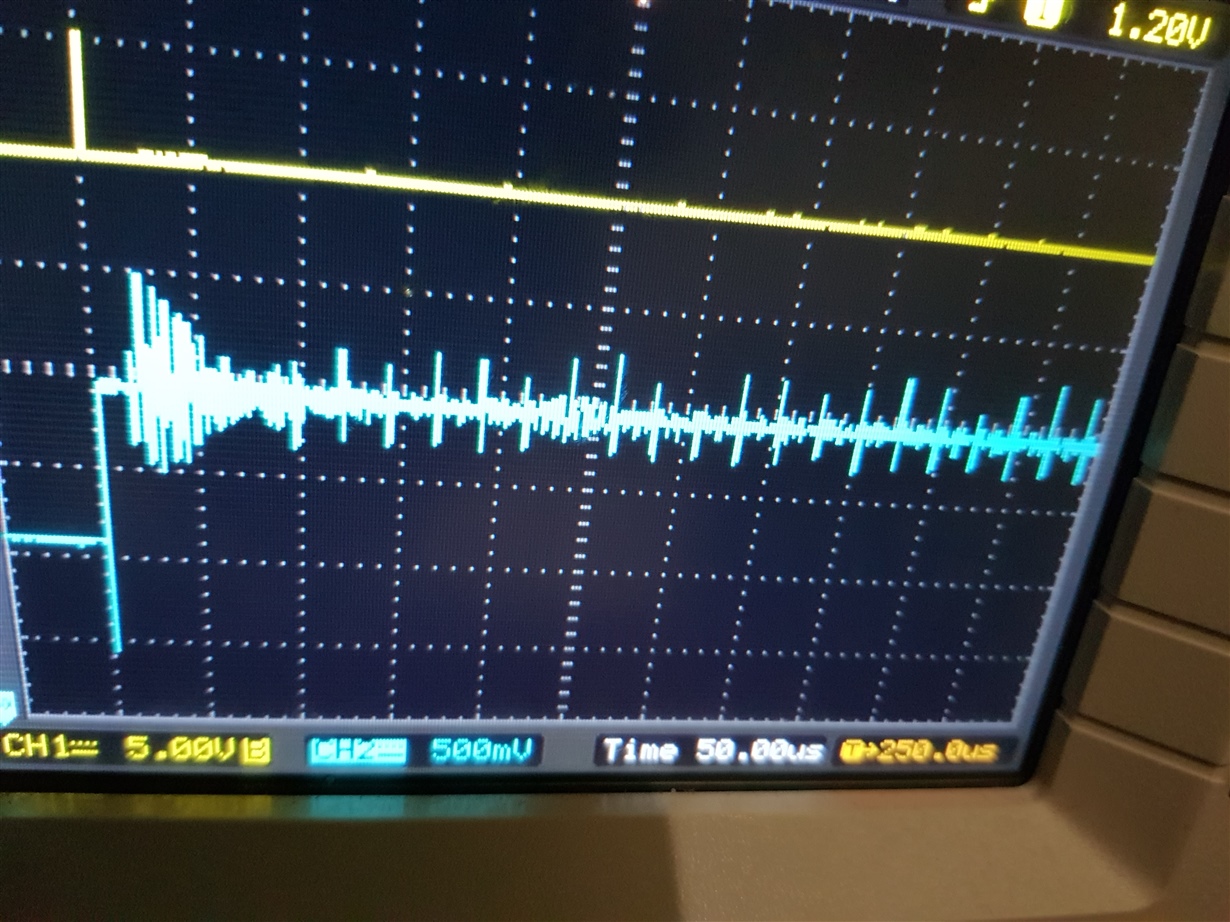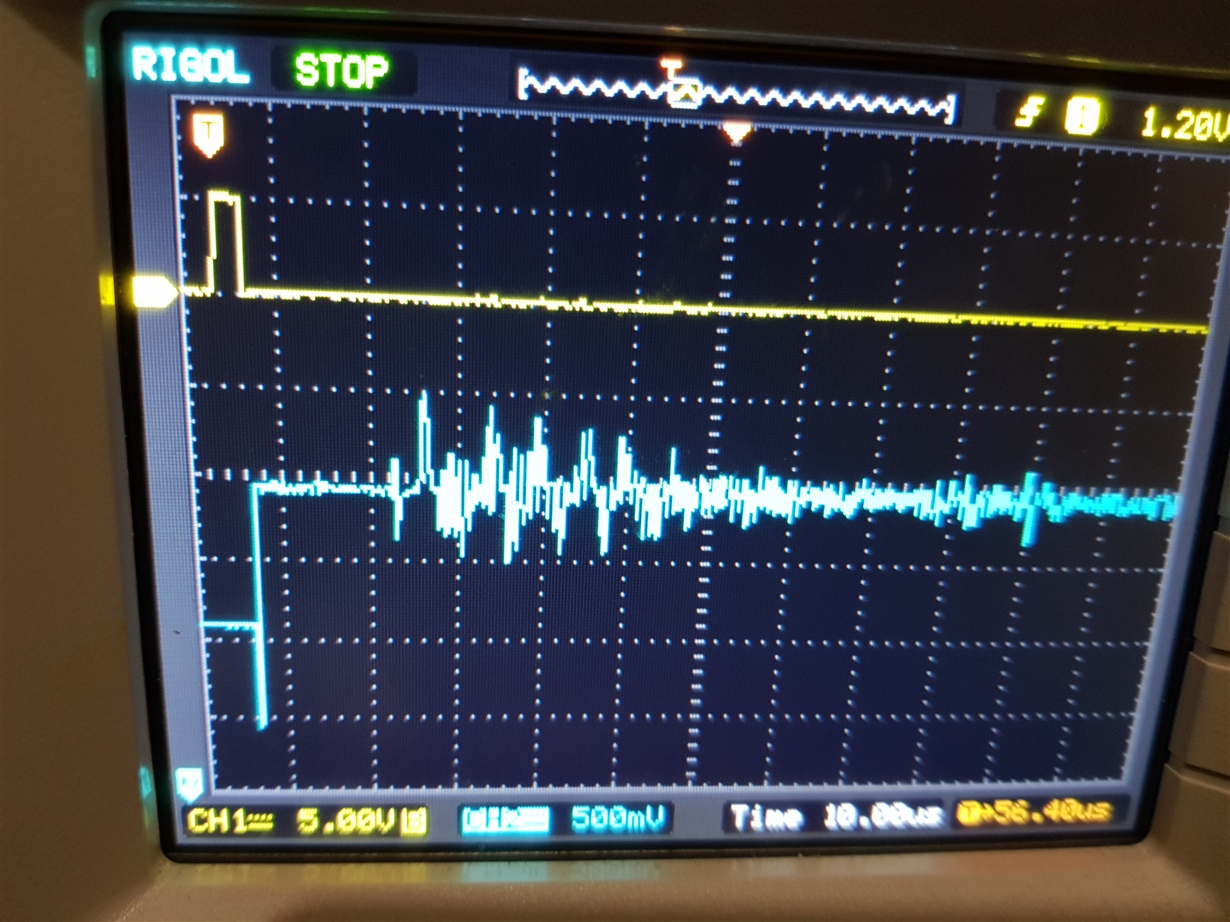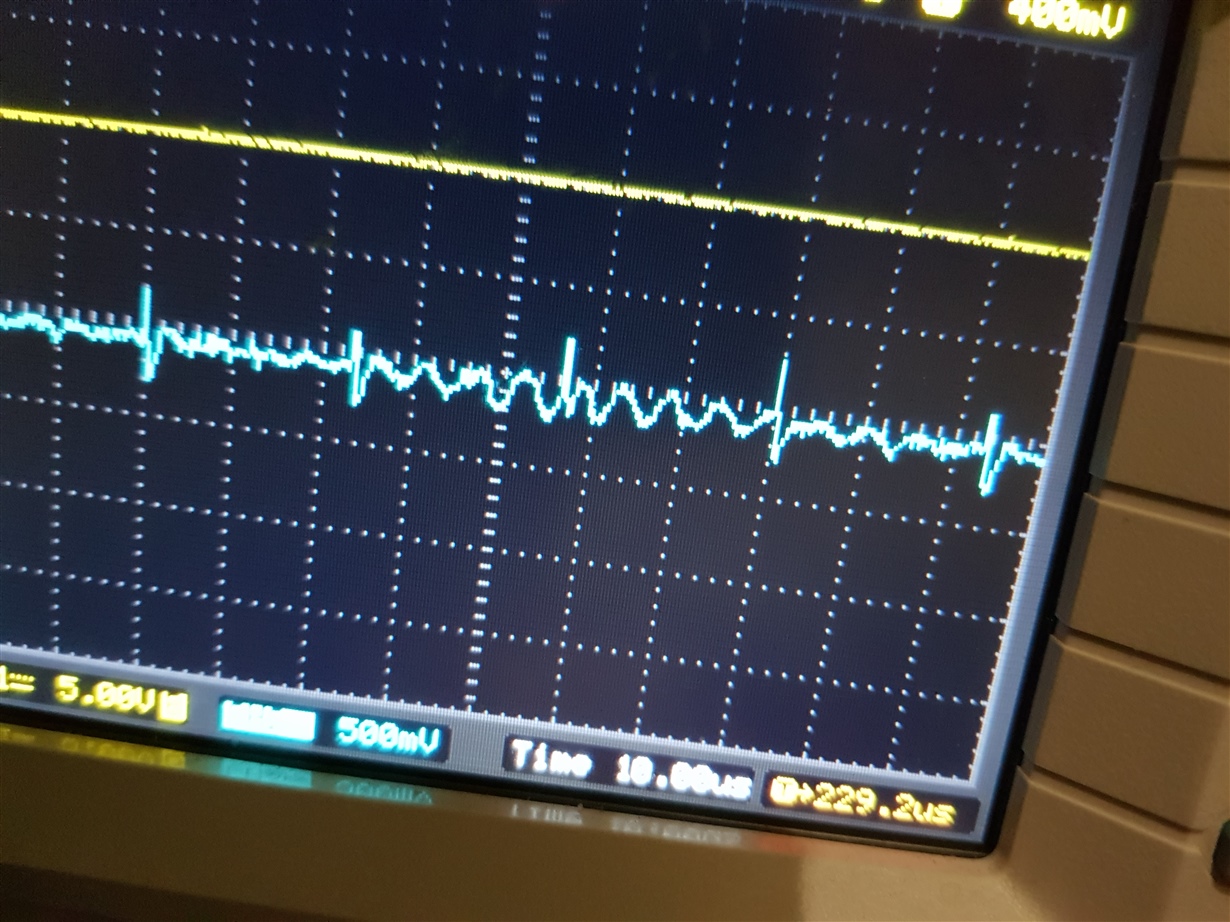Other Parts Discussed in Thread: TDC7200
Metal cylinder measurement using tdc1000. I have a custom board using a pic microcontroller and everything works fine when used with thin metals and plastic
enclosures. However when i use a metal cylinder 2mm thick the waveform I am seeing looks unusual. When measuring concentration should the receive mode be single echo?
The diameter of the cylinder is 0.30 meters and the microcontroller is reporting 4000 ticks at 100ns. The liquid is lpg. I have used the techniques provided to mount the sensor which is a stemic 1mhz 15mm. What your seeing is the stop pulse and the signal on the compin pin.
thld - 125mv
gain 21db
autozero 64us
tx pulses = 1
rx pulses = 1





